- Administrator
- Albums and Singles
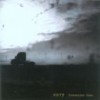 Former Japanese hardcore group Envy continues their growth with their latest album, one of soaring guitar epics that are marred only by a sameness in mood and approach. While starting strong, the album starts to unravel as the group adheres to its own formula too frequently.
Former Japanese hardcore group Envy continues their growth with their latest album, one of soaring guitar epics that are marred only by a sameness in mood and approach. While starting strong, the album starts to unravel as the group adheres to its own formula too frequently.
Sweeping layers of guitars tinged with melancholy start many of the songs, followed by some spoken lyrics as the tempo and intensity build to a peak in which the singer’s speech turns into hoarse screams. The beginnings of songs like “Scene,” “The Unknown Glow,” and “Night in Winter” are misleading, for while the intros are among the prettier moments on the album, they too revert to the formula suggested by the first two tracks. However, the dark thumping ending “The Unknown Glow” is one of the few exceptions and proves that the group has the ability to experiment, I just wish they’d do it more often.
Another problem is that the singer uses his screams to cover all of the emotional bases. If he’s not talking, he’s screaming, which leaves little room in-between for any other type of expression. Maybe that’s an unshakeable holdover from the group’s hardcore days, I don’t know, but it’s a shame because the music is otherwise excellent, and sometimes even gorgeous. The exception to the screaming is the singing that appears a few minutes into “Crystallize,” which is a nice change of pace and suggests other avenues for the group to explore. Yet even this moment of refuge eventually leads to an emotional level that can only be communicated further via screams that sound like all of the others on the album, spoiling much of the track’s uniqueness. Used sparingly, this vocal approach would be more effective but as it’s currently utilized, I found myself bracing for the moment it entered the mix rather than finding the catharsis intended in its appearance. The spoken moments are obviously less grating but almost as predictable.
The rest of the band’s dynamics work well with its melodic guitar interplay and versatile rhythm section, and the music alone is often reason enough to listen once the vocals have numbed me into submission.
samples:
Read More
- Administrator
- Albums and Singles
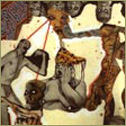 Inside this inverse carcass sleeve art comes a slice of fresh white vinyl, a very un-Dead Machines like piece of plastic; most Wolf Eyes side projects look like they’ve been scraped from the walls of a suicide watch art workshop. This is Mr and Mrs John Olson’s most straight and soundtrack-like work to date, managing to upset the neighbourhood’s canine contingent while retaining that trademark low tech malignant sound.
Inside this inverse carcass sleeve art comes a slice of fresh white vinyl, a very un-Dead Machines like piece of plastic; most Wolf Eyes side projects look like they’ve been scraped from the walls of a suicide watch art workshop. This is Mr and Mrs John Olson’s most straight and soundtrack-like work to date, managing to upset the neighbourhood’s canine contingent while retaining that trademark low tech malignant sound.
Varispeed croaks turn into clockwork splashes as the slow start-up of gruff Steam trains usher in this latest Dead Machines sticklebrick sludge. The spirit of Lee Perry’s chicken bone voodoo parasitically lives on in the edge of a survival knife dub found on both sides of this disc. Everything here (well, everything but the horn on side B) is shakily plumbed through the band’s handmade operating aesthetic. Standing Kraftwerk style behind battered suitcases of open backed reverb boxes, reused elements are birthing tiny tunes amid the space and clank.
A detour through a summer storm of hi-frequencies eventually bails out with some weird hookah / party horn work. The edges of these sounds are feedback blips, chips of notes blown across foggy battlegrounds days after steel has finished cleaving guts from bellies. Birthday kazoo blasts slashed bedding of spinning greys, only to peculiarly morph into the sound of a fatally wounded llama. Dead Machines really are an odd pair.
Another element in their homespun charm is hearing someone moving over creaking floorboards to get to a new instrument or add another cracked box into the mix. This apparent air of ‘now’ just helps to demonstrate the instinctive chemistry between these two.
Dub trailed chimes of single plucked string (piano, guitar: it’s hard to tell) create a befuddling but beautifully clear landscape in sections of this release. The A Side hits its finale to the sound of a fly disintegrating on a windscreen, mics picking up torn insect flesh at infinitesimal levels.
The flip is a little more focused and sedate, avoiding the space and intangible fuzzy edges of the other side. Mr. Olson’s horn might be wedged in-between the spokes of a clang and clank radiator grill but still he still manages to persuade delicate lines from it. As Mrs Olson tries to sharpen a mallet between the crank of pistons and wrecking yard pus, he sails on a spare air of inquisitive horn parts. Colliding streams swim with the kind of grace normally found in genres other than noise improvised from detritus / junk. This almost traditional musicality is brought to earth with the levity of call and response kazoo / percussion and a succinct tiny one note beat box part. This mixing of elements continues to build the band into a formidable and expansive minded pairing.
samples:
 
Read More
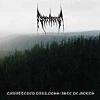 Compiling two separate albums on one disc, this Striborg release is a relatively disappointing affair. Over 70 minutes of pedestrian black metal is not something I need in life.
Compiling two separate albums on one disc, this Striborg release is a relatively disappointing affair. Over 70 minutes of pedestrian black metal is not something I need in life.
- Administrator
- Albums and Singles
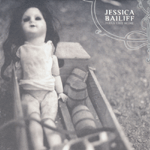 Jessica Bailiff's fourth full length for Kranky is easily her most approachable work to date. Feels Like Home provides all of the familiar elements of Bailiff's unique songwriting, but in easily-digestible three minute slices.
Jessica Bailiff's fourth full length for Kranky is easily her most approachable work to date. Feels Like Home provides all of the familiar elements of Bailiff's unique songwriting, but in easily-digestible three minute slices.
I had expected Feels Like Home to be a much simpler and more stripped-down acoustic affair as it seemed like Bailiff was moving away from the dense layering of her first two records with her last effort. Instead, she's chosen to refine and compact the sound that she explored on Hour of the Trace and Even in Silence, bringing some of the vocals to the foreground while leaving out the epic scale of 7-12 minute songs.
Of course, the drawback to this approach is that the songs that really kick at three or four minutes feel like they could easily go on for twice as long without getting stale. With shorter songs and more up front and transparent production, Bailiff turns her dreamy washes and lyrics into something more closely resembling pop songs, but she keeps convention at bay with a series of false endings and otherworldly transitions that remind me that these aren't songs that have been stamped out of a mold.
The album's second track "We Were Once" is a beautifully clean and to-the-point fairy tale, standing out as what would likely be the album's "single" were Bailiff and Kranky truly aiming for pop glory. Later on, the whispering of Russian voices in that begins in "Cinq" adds a new flavor to Bailiff's work, while "If We Could" is a drone piece that might have worked just as well the basis for an eight minute song as it does a 2:45. "Spiral Dream" gives the album its most dramatic moment when a reverb-drenched piano is suddenly engulfed in a wall of fuzzy bass, guitar, and breathy voices that would make any Spacemen 3 fan blush.
For longtime fans of Bailiff's work, this new approach of making quick points rather than building long growing spaces might be a little bittersweet. The songs here represent some of Bailiff's best, most melodically approachable material ever, but they are also some of her shortest songs! Luckily they work amazingly well in condensed form, but can I really be blamed for wanting more?
samples:
Read More
- Administrator
- Albums and Singles
 Compiling two separate albums on one disc, this Striborg release is a relatively disappointing affair. Over 70 minutes of pedestrian black metal is not something I need in life.
Compiling two separate albums on one disc, this Striborg release is a relatively disappointing affair. Over 70 minutes of pedestrian black metal is not something I need in life.
Southern Lord
This was my introduction to Striborg (a one man act like most underground black metal artists, the misanthropy always gets in the way of forming a band) and I must say I was expecting more. Sunn O))) have rated this guy quite highly and as such they’ve not only named a track from their Black One album after him but have released this disc on Southern Lord. My expectations were high; I was hoping for something experimental or at least pushing the boundaries of black metal but instead I found it to be mostly unremarkable with only the odd track grabbing my attention.
The first six tracks make up Embittered Darkness, a collection of new recordings. The opening piece is a standard introduction to set the mood (bleak in case you had to ask) and the following song, “Wrapped in a Cocoon out of Harm’s Way,” is by the book black metal in all aspects apart from the drumming which is unusual for the genre in that it relied very little on blast beats and more on melodic playing. It’s only on “Race of Apathy” that I can see any sign of Striborg’s supposed brilliance. An unaccompanied and out of tune acoustic guitar repeats the same piece of music constantly before suddenly some paint stripping overdriven guitar and another curious drum beat kick in. The rest of Embittered Darkness is more of the same with very little music of note.
The demos that make up Isle de Morts sound like they’ve come from the same recording session as the songs from Embittered Darkness. Striborg must be a musical time capsule. An artist that shows no evolution over a decade to me is a one trick pony. The only improvement or major change that I could hear was that his vocals sound less ridiculous on the newer material. At one point on “Return of the Dark Lord” he actually pulls off a great Donald Duck impression. I’m sad to say that the best part of Isle de Morts is the less than two minute keyboard intro. Most of the other tracks could be swapped around at will as they are all very samey with little character of their own.
I know part of the aesthetic of black metal is that having a poor production wins you cool points but to be honest I’m sick of flat sounding black metal records. Equally I don’t want over the top symphonic interludes and the music multitracked to death but there’s only so much that can be done with a tiny, tinny practice amp and a distortion pedal. Striborg seems to have used the exact same equipment for his 1997 demo as he has for the new songs; there’s little presence to the music. The audio is also heavily compressed with little to no dynamics left intact which destroys any chance of the music creating a decent atmosphere. It doesn’t make it grim, kvlt or whatever word these days describes having a weak sound; it makes it sound crap.
Southern Lord have been completely on the ball with nearly all the black metal they’ve released previously but with Striborg they are way off the mark. It’s not an inherently bad record (although some of the vocals are very try-hard) but it is unoriginal and boring which is almost worse than being a bad record.
samples:
Read More
- Administrator
- Albums and Singles
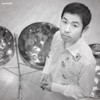 For his fourth CD, Yoshio Machida improvises on a steel drum, using no electronic processing as he has previously and only minimal overdubs to create music that’s both impressionistic and meditative.
For his fourth CD, Yoshio Machida improvises on a steel drum, using no electronic processing as he has previously and only minimal overdubs to create music that’s both impressionistic and meditative.
Sticking to the floral theme of his prior album Infinite Flowers, the first song is a three-part movement entitled “Lotus.” Light and reflective, the passages consist of many tiny melodies banded together, interspersed with bouts of introspective silence. None of the melodies dominates, and though the compositional effect initially feels random, some common motifs reappear upon closer inspection. Of a similar nature is “Texas Vino,” which was inspired by Erik Satie’s “Vexations.” Unlike Satie’s proposed 840 repetitions, however, Machida’s piece is much shorter, stealing into the room with simple melodic lines that add an aura of mystery to the surroundings.
The album shifts significantly with “Bloom,” composed of shimmering drones produced through overtones that appear when Machida hammers the drum in quick succession. What forms from this method is a startling work of prismatic beauty, with subtle shifts and interplay reminiscent of early minimalist composers. “Dew” is different from the other songs in that it feels as if it’s composed of fractured melodies that are longer than those in “Lotus” but left purposefully incomplete to create the slightest tension with the desire to hear them fulfilled. The album closes with “Lotus Solo,” which is a simpler version of the earlier movement and an apt closer for an album using reflection as a touchstone.
This album isn’t suitable for every occasion, but is perfect for moments of cleansing and contemplation.
samples:
Read More
- Administrator
- Albums and Singles
 The impression that I got from various official sources for the band is that Everlovely Lightningheart are some kind of artistic commune that have tapped into some abstract spiritual plane and have brought back enlightenment in the form of music. While there is a lot of beautiful music on this album, Everlovely Lightningheart are far from the cultural monument that they're portrayed as.
The impression that I got from various official sources for the band is that Everlovely Lightningheart are some kind of artistic commune that have tapped into some abstract spiritual plane and have brought back enlightenment in the form of music. While there is a lot of beautiful music on this album, Everlovely Lightningheart are far from the cultural monument that they're portrayed as.
Hydra Head
Cusp is a single 40 minute track where the music is split up into different movements but still form one piece, each bit fades into the other but there is little to link them thematically. It begins with a piano line that becomes more haunting as it is drenched in reverb and fades out (it sounds almost like it is wheeled out into a different room). This melodious intro is replaced by a lengthy, atmospheric soundscape. It is pleasing to the ears and relaxing to the mind but it lacks any real depth to engage me.
Segments of Cusp veer into Godspeed territory: about half-way through is what sounds like a dulcimer and lots of echoed noise that just screams Constellation Records to me. This isn’t an isolated event. Many of these moments sound great but it feels like I’m listening to Lift Your Skinny Fists like Antennas to Heaven rather than a new album by a new band (well newish, it’s been out for a few months). It’s one thing to take influence but quite the other just to appropriate such a distinctive sound for your own.
My main problem with this album is that there are a few bits that I’d rate quite highly but they’re trapped in the middle of the disc with some less than appealing material between them. As this is all one track I can’t just skip to what I like or program the CD player to ignore it. Instead it’s the tedious task of fast forwarding through the audio to get to what I want. I can’t see myself listening to Cusp very often but equally it’s not that bad that I’m going to ignore it forever. There’s potential here if they find a sound of their own, I’ll be interested to see how any future releases sound. For now, they’re just another instrumental band with good intentions but lacking the A grade material.
samples:
Read More
- Administrator
- Albums and Singles
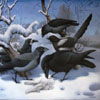 Lisa Germano's latest record (her first for Young God) is beautifully weird. Any record that lays out the line "Go to hell/Fuck you" as the sing-along hook to a lush, folky lullaby can't be bad!
Lisa Germano's latest record (her first for Young God) is beautifully weird. Any record that lays out the line "Go to hell/Fuck you" as the sing-along hook to a lush, folky lullaby can't be bad!
Young God Records
If "Red Thread," the bitter argument song built around what must be the most sweetly sung expletive in the history of recorded music were the only thing worth paying attention to on In the Maybe World, the record would still be worth picking up at full price. The fact that the album is loaded with other gems that are odd but impeccably pretty makes it a steal at any price.
This is a great record to escape into. It's filled with vague stories that sound somehow familiar and it's produced with familiar instruments that sound somehow foreign. I love that kind of reversal of expectations, and Germano's unique approach takes songs that could have easily been rendered as background noise and makes them something that demands focus.
The only time she loses me is when the rhymes get too obvious, or the lyrical content steps too far into the abstract world of fairies and dreams. Germano's best songs here are dark even though they sound hopeful, and a little creepy even as her voice seems so polite and innocent.
samples:
Read More
- Administrator
- Albums and Singles
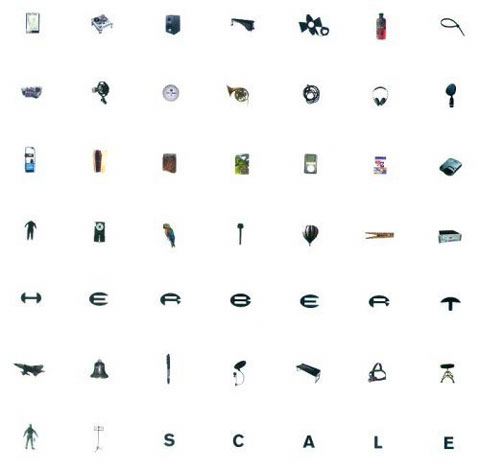 After puzzling some and dazzling others with the bizarre and inaccessible detour 'Plat Du Jour', Matthew Herbert makes a long awaited, though less than thrilling, return to the forward-thinking discotheque.
After puzzling some and dazzling others with the bizarre and inaccessible detour 'Plat Du Jour', Matthew Herbert makes a long awaited, though less than thrilling, return to the forward-thinking discotheque.
While avant garde audiophiles oohed and aahed over that 2005 release as well as his "big band" excursion two years prior, many of us were instead eagerly awaiting a proper follow-up to the critically acclaimed and dancefloor endorsed Bodily Functions. From the opening squelches and four-to-the-floor thump of "Something Isn't Right," it becomes abundantly clear that Herbert has at last returned to us, his personal politics remaining on display. However, Scale is hardly as memorable or classic as Bodily Functions, despite the welcome presence of chanteuse Dani Siciliano on nearly every single track. Though there are a number of moments where Herbert's deft programming and sample construction shines, this album never quite gets back to heights once achieved.
On more than a few occasions here, Herbert seems to be mining kitsch for kitsch's sake, and however lovingly, that trick seems intellectually tiresome much like Uwe Schmidt's now quite overdone electro-latino wankery as Señor Coconut. Take "Moving Like A Train," for instance, whose gratuitous tooted horns and sampled strings sound like some ridiculous television program's opening theme. I'd like to believe that most listeners have grown bored with this tongue-in-cheek, winking eye approach to a saccharine retro sound that was never really all that great to begin with. If they haven't yet, they probably should.
I fully grasp Herbert's attempt at a clever fusion of socially conscious and political content with syrupy soundtracks, though it's hardly the most original concept in these days of excessive hipster irony. "Birds Of A Feather" actually pulls its off fairly well, where animal rights takes centerstage while a modern syncopated rhythm supports the light albeit urgent musical mix.
A victim of my own expectations, I wanted to like this album a lot more than I ultimately did. I had half hoped that Herbert would have given us more funky cool house and less loungey jazz clutter, thinking perhaps naively that he might have gotten it out of his system on the interim albums. Instead, Scale presents us with a patchwork of smirks and pokes, nudges and judgements, rarely offering up something other than derivative schmaltz.
samples:
Read More
- Administrator
- Albums and Singles
 The fourth album from the Welsh experimental rock band Ectogram is a heavy going yet rewarding experience. Elements of angular post punk guitar playing are mixed with krautrock influenced rhythms (Ectogram being tour buddies with Faust make this no surprise) and some unusual “do I like it or hate it?” vocals to make a pair of intricate and fascinating CDs.
The fourth album from the Welsh experimental rock band Ectogram is a heavy going yet rewarding experience. Elements of angular post punk guitar playing are mixed with krautrock influenced rhythms (Ectogram being tour buddies with Faust make this no surprise) and some unusual “do I like it or hate it?” vocals to make a pair of intricate and fascinating CDs.
Ankstmusik
Electric Deckchair is best described as two albums and not a double album as the two discs are intended to be listened to as separate entities. Both would fit on a single CD but Ectogram decided not to cram it all onto one disc. This was a good call on their part as the music on both discs is quite dense and a lot to digest in one sitting. Splitting the material into two albums makes a lot more sense and allows for an easier listening experience.
Sing Something Complex starts off with “Daisy Rind,” which sounds like two bands rehearsing at the same time in the same room. One guitar and the drums work together to drive the song and another guitar plays slow, trebly notes that don’t fit with the song at all. It makes for an uneasy listen but at nearly ten minutes in length, it worked its way into my head and it was satisfying when it clicked into place. Apart from the 24 minute “Ptarmigan,” the rest of Sing Something Complex is a lot more accessible. “Small Things Crawling” is the best part of the disc; Ann Mathews’ difficult vocals work best here and the music is spot on (metallic, brittle guitars pierce through the mix beautifully). The aforementioned “Ptarmigan” is a little disorientating as for most of its length it feels more like a jam session rather than a finished song. However, after a few listens it becomes less intimidating and more enjoyable.
The second disc, Sing Something Sibilant contains more relatively straightforward rockers and as such it is easier to get into than the other. “Overstopped” sees the band on full throttle; there is a cracking feedback-laden guitar “solo” that reminds me of Lou Reed’s freakouts on White Light/White Heat if they were covered by Thurston Moore. The last track, “3 Fort in Asia,” is my favourite song from either disc. It’s another long song (verging on 20 minutes) and slowly builds up from a dreamy and laid back piece to something more fiery and potent. Unlike “Ptarmigan,” it is more focused which gives it more backbone.
Electric Deckchair is a great set of albums that requires a little work to get into but once I made that commitment, it was worth the effort. Although I must admit, the front cover brought back horrible memories of some awful prog albums that I have been subjected to in the past. I could have done without that!
samples:
Read More
- Administrator
- Albums and Singles
 Milwaukee's stalwart psych rock veterans F/i are back with the reissue of a 2003 album that was previously only available in a limited quantity and also marks the return of original member Richard Franecki. Strange song titles like “Hit the Kill Switch, Eugene,” “Prelude to the Afternoon of a Daisy Cutter,” and the title track itself highlight the band's otherworldly aspirations.
Milwaukee's stalwart psych rock veterans F/i are back with the reissue of a 2003 album that was previously only available in a limited quantity and also marks the return of original member Richard Franecki. Strange song titles like “Hit the Kill Switch, Eugene,” “Prelude to the Afternoon of a Daisy Cutter,” and the title track itself highlight the band's otherworldly aspirations.
With nine tracks running to almost 80 minutes, the band has plenty of time to explore. The opener, “Uber-Wizards of the 88th Meridian” could be a blueprint for the rest of the material. Here the group finds a groove from the beginning and the rhythm section holds down the fort throughout the nearly fourteen minute track while effects-laden guitars and throwback effects swim through the mix. This space jam has some moments of impact and prepared me for the songs that follow.
Unusually, the best sequence is in the middle of the album, the traditional dead spot of many other recordings. Electronics take the foreground for a nice change on “Surgical Procedures on the Ship,” an unexpectedly great hip hop beat dominates “Using Enemy Weapons,” and the group does their best exotic impersonation with “No Pepsi in Kabul.” I really like the rhythm section overall, especially the Teutonic pulse in “Hit the Kill Switch, Eugene,” which is important for this type of extended music. Although there are occasional moments in which the group relaxes its focus, they ultimately don't stray from their mission to discover new planets.
samples:
Read More

